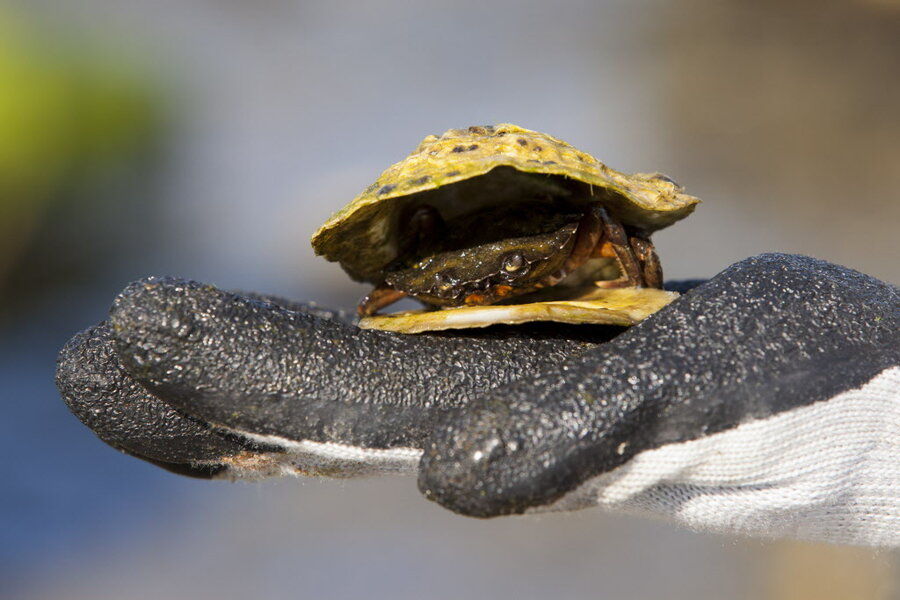Putting invasive species on the menu - and helping the planet, too
Loading...
In the United States alone, there are more than 50,000 species of invasive plants and animals that can cause harm to the environment, the economy, agriculture, and human health. A study from the University of Cornell estimates that these species cost the U.S. more than US$120 billion per year in damages and expenses associated with control and management. But they may also be a tasty source of food.
Eating invasive species is one way to control populations, raise awareness about the issue, and provide sustainable sources of food.
Matthew Barnes, an ecologist at Texas Tech University and the editor of Invasivore.org, believes that eating invasive species can raise awareness about the issue, which could have a broader effect than just reducing these species by eating them. In an interview with Smithsonian.com, he explains that the real value of eating invasive species is a public education and awareness tool. “If people are aware of what invasive species are and what kind of impacts they have on the environment, that might prevent them from introducing the next invasive species,” he said.
Here are six initiatives that are encouraging eaters to consume invasive species in the U.S.
Can’t Beat ‘Em, Eat ‘Em
Louisiana chef Philippe Parola is encouraging diners to chow down on invasive species. With his years of culinary experience, he has a knack for turning less appetizing critters like nutria and alligators into delicious dishes. A few years ago, he took aim at the Asian carp and formed the Silverfin Group, a campaign to rebrand this undesirable fish as a nutritious and affordable delicacy. The efforts are intended to help fishers safely harvest and sell Asian carp while creating consumer demand for the fish.
Eat The Invaders
This website provides an overview of efforts promoting eating invasive species, including recipes and recaps of the latest news or research. There’s also a detailed timeline of invasions and a list of questions for people interesting in hunting or harvesting invasive species—including why eaters shouldn’t consume zebra mussels or pythons, and how to help prevent the spread of invasives in other ways.
Eating Aliens
Hunter and blogger Jackson Landers set his sights on invasive species in his 2012 book, Eating Aliens. He spent 16 months hunting invasives such as black spiny-tailed iguanas and European green crabs. His book teaches readers that hunting these harmful species can be a tasty way to help make a dent in this problem.
Eradication by Mastication
The Institute for Applied Ecology started the Eradication by Mastication campaign to increase public awareness and support the fight against invasive species. Their efforts focus on species such as bullfrogs, wild turkey, wild boar, garlic mustard, Himalayan blackberry, and kudzu. Two of the biggest components of the campaign are the Invasive Species Cookoff and They’re Cooked, an invasive species cookbook. The annual cookoff, held in Corvallis, Oregon, invites amateur chefs to show off their best dish featuring a local invasive. The institute’s cookbook is a great place to find inspiration, as it features 50 recipes from well-known chefs.
Invasive Lionfish
The Gulf and Caribbean Fisheries Institute created a web portal dedicated to informing people about the threat posed by lionfish in the Atlantic Ocean, the Gulf of Mexico, and the Caribbean Sea. The site busts myths about lionfish, keeps tabs on the latest studies on control methods, and outlines the plans in place to manage the species. A major focus is how to fight the invasion by eating lionfish. There’s a cookbook full of recipes featuring lionfish, as well as a list of restaurants that are serving lionfish on their menus.
Invasivore.org
A group of biologists developed Invasivore.org to serve as a guide to eating invasive species. The site is more than a collection of harvesting tips and recipes. It keeps readers informed about new research and developments, provides details about prominent species, and presents the strategies in place to manage invasives.
This article first appeared at Food Tank.





